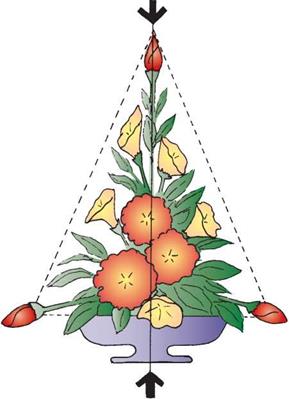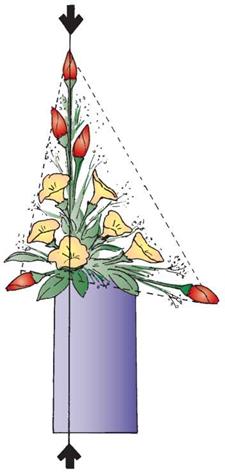In floral design, balance is more visual than actual. The viewer needs to sense the same amount of importance on each side of center. Center may or may not be the midpoint of the container; it should be regarded as the point of convergence of the design’s horizontal and vertical lines. When correctly balanced, a design will not appear to lean forward or backward, or to the left or right.
Two types of balance are common to floral design: symmetrical and asymmetrical. A symmetrical arrangement, if bisected by a line (axis) running from the vertical tip through the base of the container, has flowers and foliage in almost exactly the same places on opposite sides of the line (Figure 7-8). An asymmetrical arrangement has an axis also, but it may or may not bisect the container equally. It also extends from the vertical tip of the design through the point where the arrangement’s lines converge. The collective visual weight of the flowers, foliage, and container on one side of the axis should equal that on the opposite side; yet one side is not a mirror image of the other (Figure 7-9). The majority of modern designs are asymmetrical because they permit greater creativity by the designer. Still, symmetrically balanced arrangements are not uncommon, and they are a good place for new designers to begin.


 figure 7-9. An asymmetrically balanced arrangement has differing sizes, numbers, or placement of flowers on opposite sides of a line running from the vertical tip through the point of stem convergence. (Delmar/Cengage Learning)
figure 7-9. An asymmetrically balanced arrangement has differing sizes, numbers, or placement of flowers on opposite sides of a line running from the vertical tip through the point of stem convergence. (Delmar/Cengage Learning)



